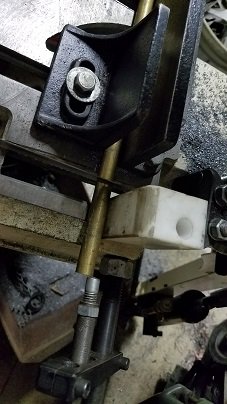- Joined
- May 31, 2018
- Messages
- 184
Hi guys,
I was giving my band saw a workout over the weekend prepping the material for a small batch job I'm working on 1 3/8" tube, 1/4 wall. No pictures to hand but it's a generic import machine.
I was wondering if anyone has any ideas for an improved stop. I am finding that, when the blade breaks through the bottom of the work piece being cut it pulls the piece and jams at an angle between the remaining bar stock / blade and the stop. It seems to happen on most sizes I have cut using the stop.
I tried moving the stop around so it contacted different areas of the bar stock but that didn't offer any significant improvements. Sometimes it can jam quite forcibly up against the blade which can't be good for it! Any suggestions would be welcomed!
Thanks,
Sam
I was giving my band saw a workout over the weekend prepping the material for a small batch job I'm working on 1 3/8" tube, 1/4 wall. No pictures to hand but it's a generic import machine.
I was wondering if anyone has any ideas for an improved stop. I am finding that, when the blade breaks through the bottom of the work piece being cut it pulls the piece and jams at an angle between the remaining bar stock / blade and the stop. It seems to happen on most sizes I have cut using the stop.
I tried moving the stop around so it contacted different areas of the bar stock but that didn't offer any significant improvements. Sometimes it can jam quite forcibly up against the blade which can't be good for it! Any suggestions would be welcomed!
Thanks,
Sam


